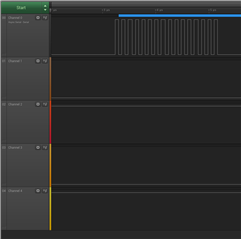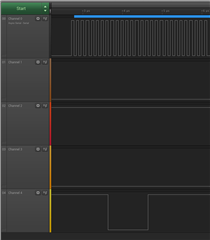Greetings!
Using the NRF52840 PDK, I succesfully erase, write and read without any modifications!
I have custom boards which involved a NRF52840 and a MX25R6435F (so same setup as the PDK), I just made modifications on the QspiDefault.ini since my pinout is different.
I try to erase all the flash chip or just one page but nrfjprog doesn't returned me any errors (so success ?) but it has no effects since I can read the chip which gives me 999999999999....9
I also try the --qspicustominit, different write and read mode but no changes.
(Assuming the wires are correctly solde ); channel 0 is clock, channel 1 is DIO0, channel 2 is DIO1 ...
This is the result for running a read of 8 bytes:


Thanks for your time.


